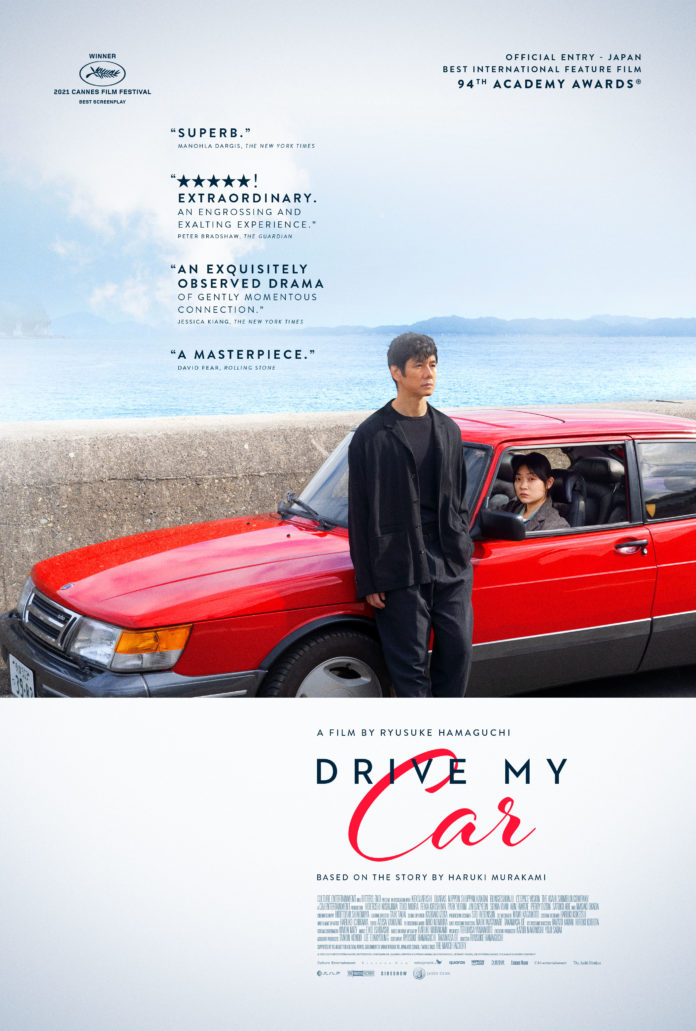Three-hour long films are often reserved for epics—films that are on a massive scale. “Titanic,” “Gone with the Wind” or “Avengers: Endgame” come to mind and they require each and every second of their runtime in order to properly and effectively tell their stories. A drama about a man dealing with the sudden loss of his wife, however, does not normally constitute this lengthy duration.
But Ryusuke Hamaguchi’s “Drive My Car” is not an ordinary three-hour long endeavor. The film takes its time to allow the audience to explore each and every aspect of its many characters: their lives and their ambitions. Whereas many films edit intimate moments to simply include the “juicy” details, Hamaguchi’s story allows these slices of life to be expressed in full. In turn, the audience can immerse itself in every conversation to truly understand each character.
One of these scenes occurs toward the end of the film as two characters sit in the back of a car reflecting on a woman that touched both of their lives. Hamaguchi decides to simply focus the camera on the character who the audience is supposed to despise. There is no escape for the audience. No cuts, camera movement, or score deviates our attention away from this person. We have to hear them out. Listen to their side of the story. Learn from them.
This 10-minute scene is built upon the tension in the dialogue. As the conversation continues, you can almost feel a bubble form in between these two. One that is just on the verge of popping. Like many of these long, drawn-out scenes in “Drive My Car,” we are at the mercy of a director so in tune with his craft as he guides us along the life of these characters.
What Hamaguchi’s film does so masterfully is it doesn’t attempt to offer a life lesson after a tragic event. Instead, we are taught that life moves on, regardless of if we are ready to continue on or not. The film’s credits do not appear on screen until forty-one minutes into the film, which is after the death of Yusuke’s wife, Oto. It signifies that Yusuke’s life, just like the plays he acts and directs, must carry on. This moment is merely the end of one chapter and the beginning of another. Hamaguchi decides to alter the structure of the Haruki Murakami short story that the film is based on in order to put more emphasis on the central story which begins after these credits.
Yasuke arrives in Hiroshima to direct a multilingual adaptation of Chekhov’s “Uncle Vanya.” One of the theater company’s rules, however, is that he is not to drive himself anywhere during his residency and will be appointed a female driver, twenty-three-year-old Misaki, to take him to his various destinations in his red Saab.
Hesitant at first, the platonic relationship that builds between these two helps one another to deal with the severe trauma and agony that each has experienced. Yusuke with the death of both his wife and infant child some-twenty years prior, and Misaki with the abuse from her mother. They’re both lost: feeling trapped in their own individual lives. The connection that forms allows them to come to terms with their pasts and move toward a more fulfilling future.
The key to this film is its simplicity. There are no intricate camera angles or flashy costumes and sets. In its place is a sophisticated story that fleshes out its characters along with their intentions and desires. It manages to tell its story so efficiently that the lengthy runtime feels facile.
For a story dealing with morbid topics such as death and child abuse, “Drive My Car,” handles them with class while showcasing the realistic trauma these characters suffer. Hamaguchi’s script is able to tell audiences that these emotions are natural but, as Yusuke states in a scene of self-reflection and healing, “We must keep on living.”








